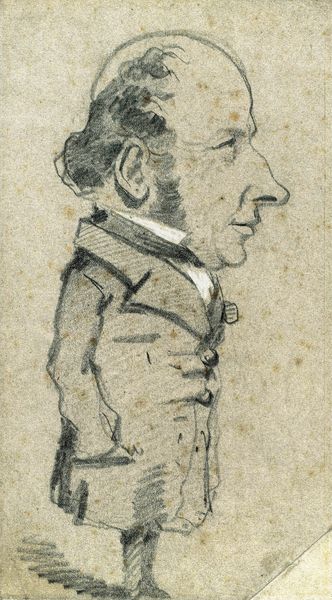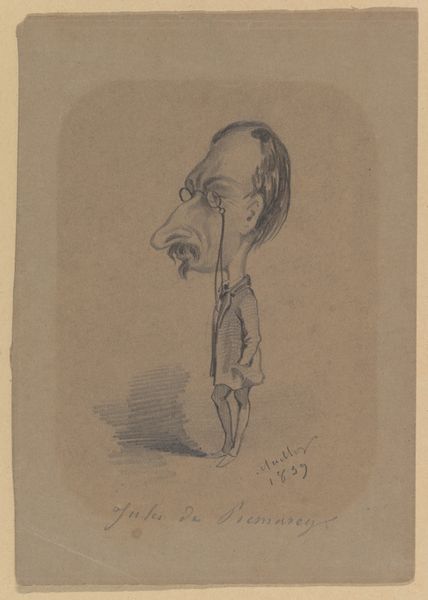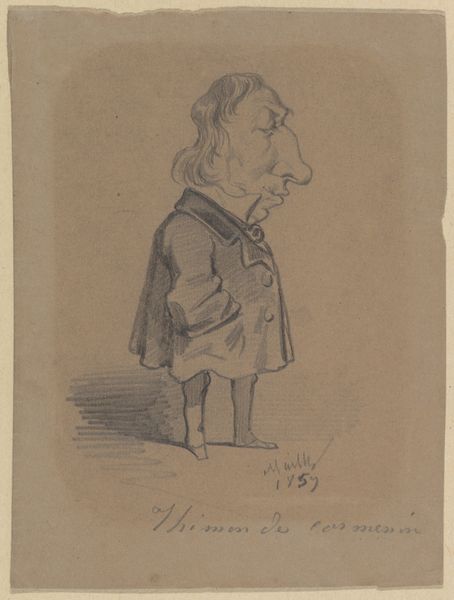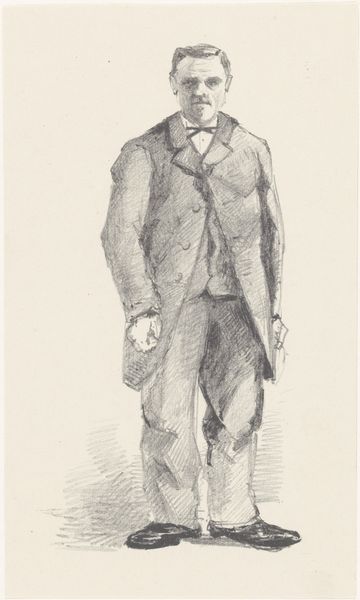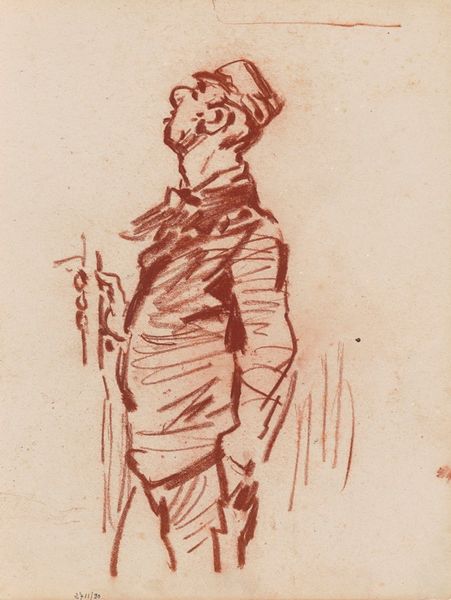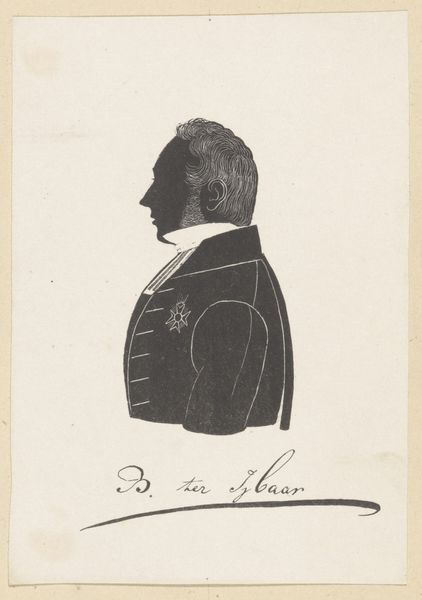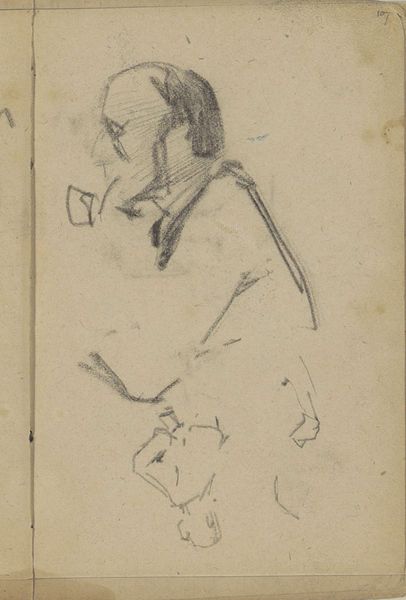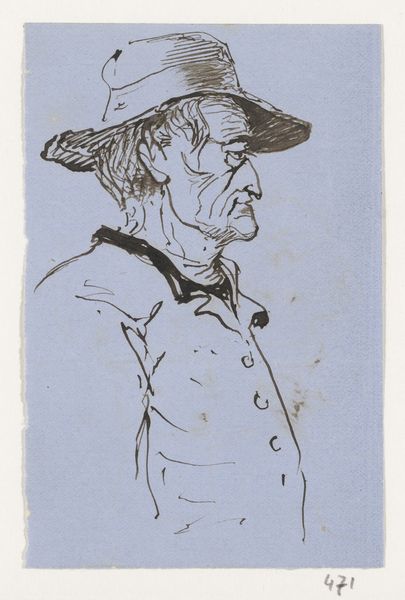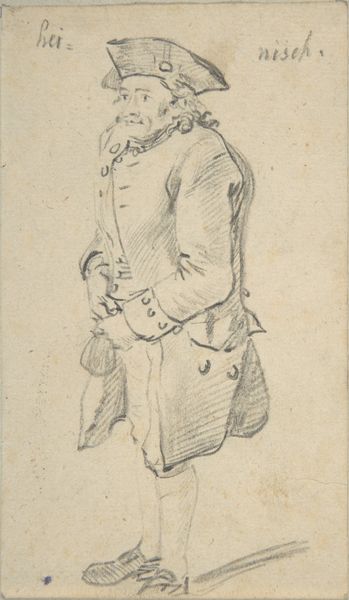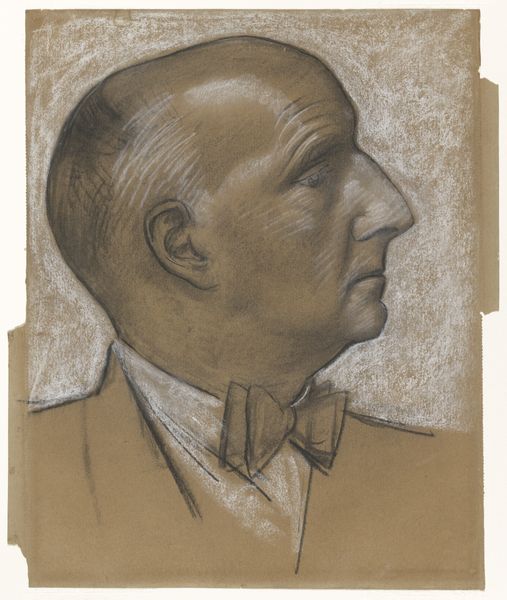
drawing, ink
#
portrait
#
drawing
#
caricature
#
pencil sketch
#
caricature
#
figuration
#
ink
#
academic-art
Dimensions: height 66 mm, width 53 mm
Copyright: Rijks Museum: Open Domain
Curator: This caricature, attributed to Théodule Ribot and dating from 1833 to 1891, presents us with a striking image of a man exaggerated, yet undeniably present. It’s currently held here at the Rijksmuseum. Editor: My initial impression? A man whose features feel both powerful and precarious. The elongated nose, receding chin, and puffed collar – there's a comedic vulnerability there, isn't there? Curator: Precisely! The power lies in the societal critique inherent in caricature. These exaggerated features—the bulbous nose, the tight lips—speak volumes about the subject’s perceived character, especially when linked to wealth, considering the inscription "Un millionnaire". We must remember that visual satire often reflects existing social prejudices. Editor: I see what you mean. It's impossible to separate this image from its intended audience and the power dynamics at play. It is clearly an exaggeration. Is this an instance of, maybe, speaking truth to power? Or does the piece simply reiterate and entrench existing stereotypes? Curator: That tension is exactly what makes this piece compelling. The technique itself contributes; the rapid, almost frantic, application of ink suggests impatience or even disdain. Ribot seems to want to puncture the image of the wealthy as somehow aloof or elevated above the social fray. It is very much an academic style. Editor: And there's a palpable unease that comes with confronting such direct criticism, especially considering the implicit biases it potentially exposes, regardless of intention. Was this meant as an amusing slight, or something with greater political and cultural depth? How was the ‘millionaire’ depicted here as being implicitly and stereotypically French? Curator: The role of such imagery in constructing and perpetuating socio-economic narratives is crucial. Whether a gentle jab or a more scathing indictment, works like this reflect—and arguably reinforce—prevailing social attitudes. In other words, such an artistic license does not operate in a vacuum. Editor: Looking at the crosshatching now, the rapid ink strokes, and the suggestive detail... you’re absolutely right. What starts as caricature quickly develops into a case study about representation, class, and what it meant to be visibly affluent. Curator: I think looking through the lens of class offers great nuance and can foster constructive dialogue, which ultimately opens our viewing. Editor: A rather concise and very socially observant piece.
Comments
No comments
Be the first to comment and join the conversation on the ultimate creative platform.
